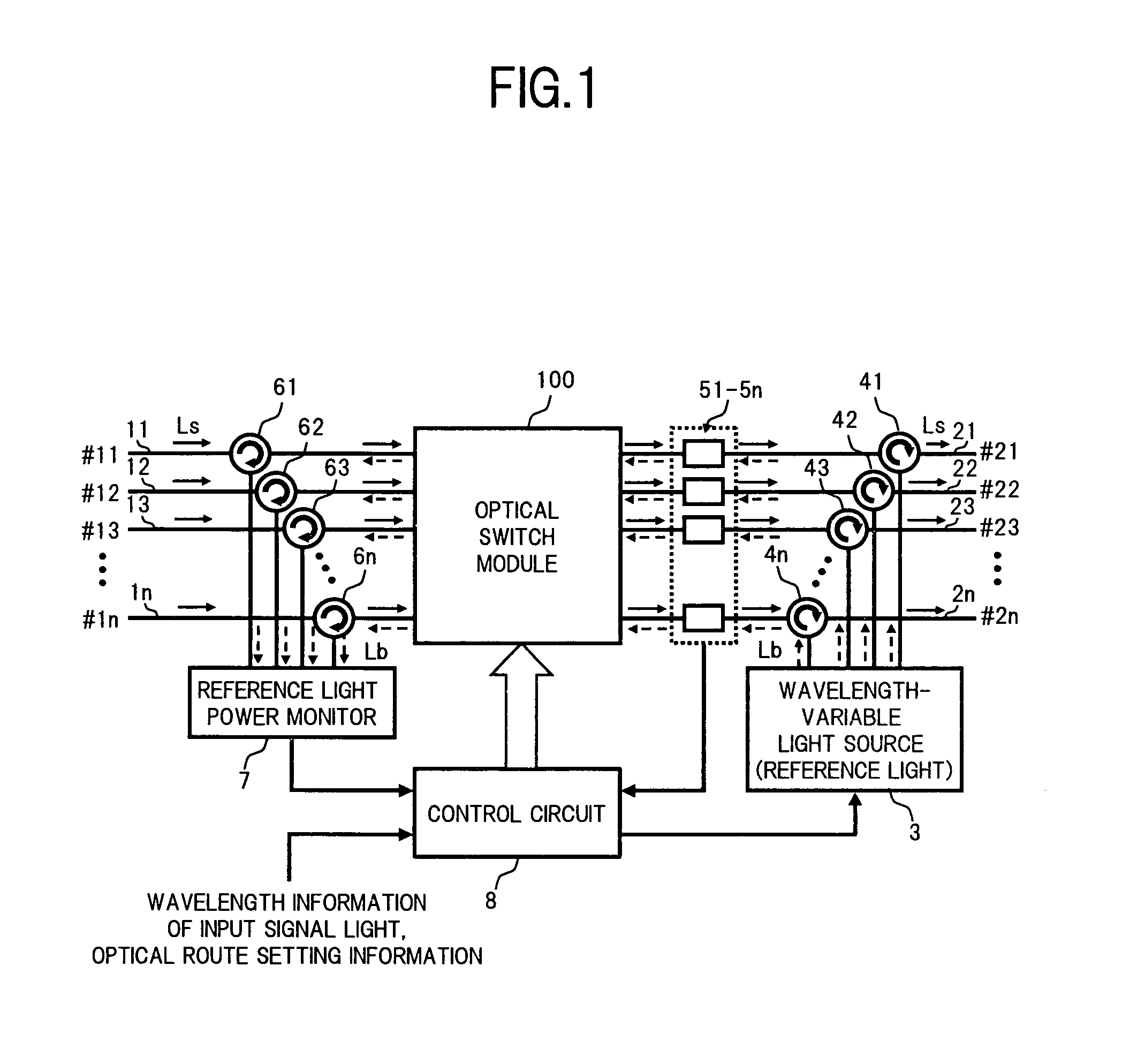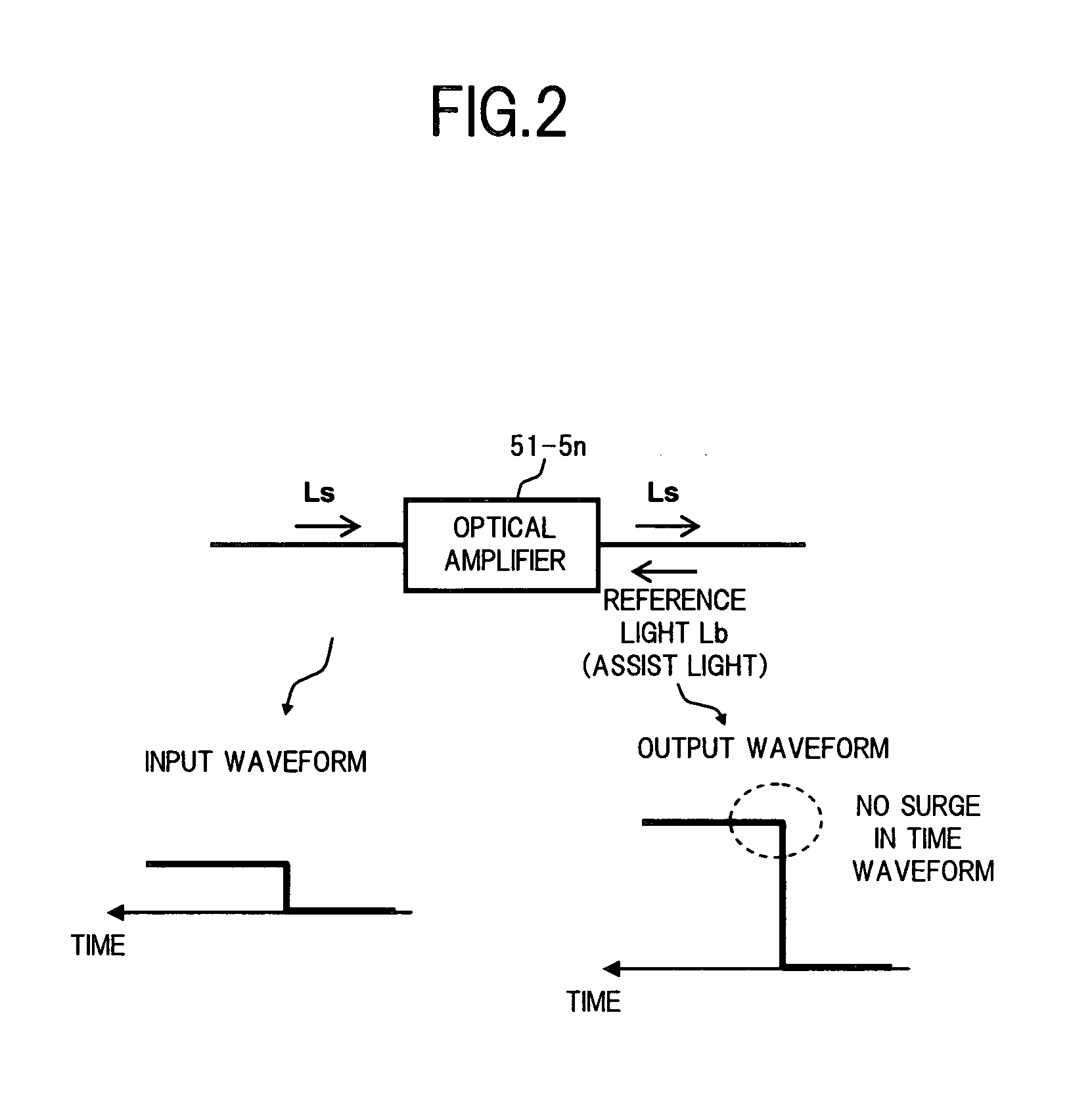Optical switching device
a switching device and optical switch technology, applied in the field of optical switch devices, can solve the problems of affecting the performance of error-free reception in the optical receiver, affecting the accuracy of optical switch modules, etc., to achieve the effect of reducing the error due to the wavelength dependence of optical switch modules
- Summary
- Abstract
- Description
- Claims
- Application Information
AI Technical Summary
Benefits of technology
Problems solved by technology
Method used
Image
Examples
Embodiment Construction
[0027] Hereinafter, embodiments of the present invention will be described with reference to drawings. The same reference numerals denote the same or equivalent parts in all drawings.
[0028]FIG. 1 is a block diagram showing a configuration of one embodiment of an optical switching device according to the present invention.
[0029] In FIG. 1, the present optical switching device comprises, for example; input ports #11 to #1n and output ports #21 to #2n; an optical switch module 100 using optical deflection elements as shown in FIG. 5; input light paths 11, 12, . . . , 1n which connect the input ports #11 to #1n to respective input ports of the optical switch module 100; and output light paths 21, 22, . . . , 2n which connect the output ports #21 to #2n to respective output ports of the optical switch module 100. Further, the present optical switching device comprises: a wavelength-variable light source 3 serving as a reference light generating section, which generates a reference ligh...
PUM
 Login to View More
Login to View More Abstract
Description
Claims
Application Information
 Login to View More
Login to View More - R&D
- Intellectual Property
- Life Sciences
- Materials
- Tech Scout
- Unparalleled Data Quality
- Higher Quality Content
- 60% Fewer Hallucinations
Browse by: Latest US Patents, China's latest patents, Technical Efficacy Thesaurus, Application Domain, Technology Topic, Popular Technical Reports.
© 2025 PatSnap. All rights reserved.Legal|Privacy policy|Modern Slavery Act Transparency Statement|Sitemap|About US| Contact US: help@patsnap.com



